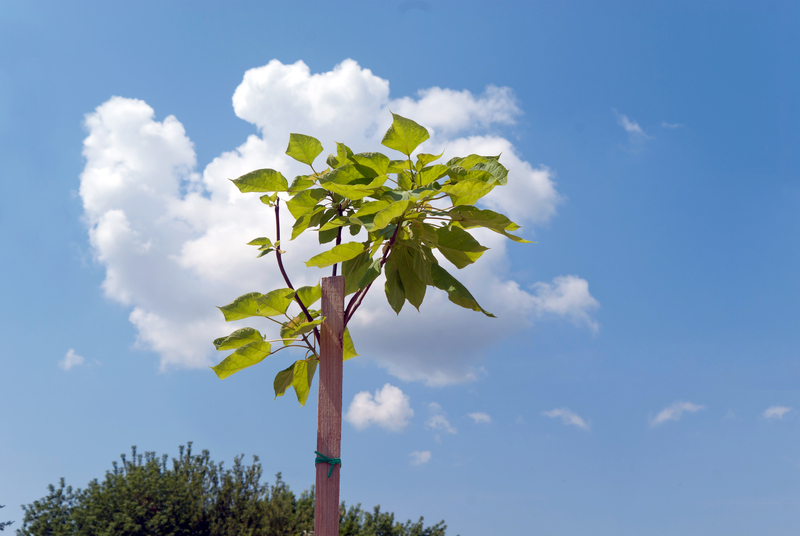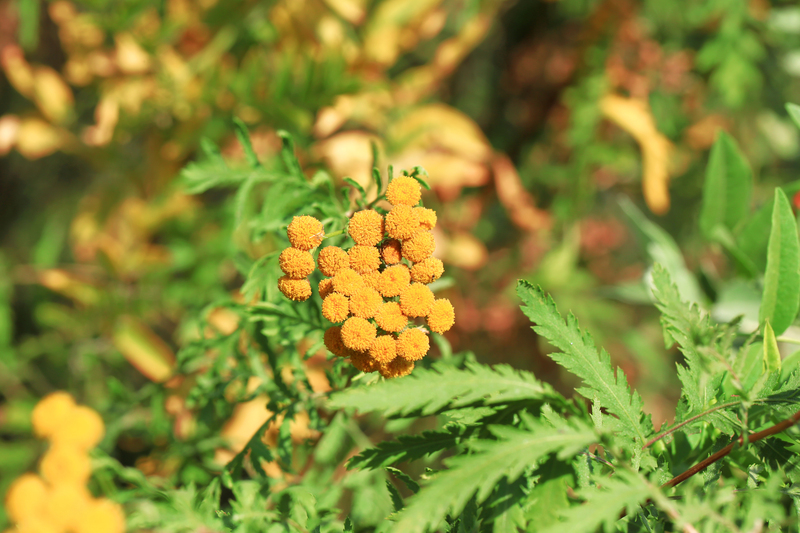Gardening: A Green Solution to Climate Change Challenges
Posted on 09/06/2025
Gardening: A Green Solution to Climate Change Challenges
When thinking about combatting climate change, vast renewable energy farms or international policies may come to mind first. Yet, one of the most effective and accessible solutions is much closer to home: the humble garden. Gardening offers an often-overlooked, but powerful, response to environmental threats. This article explores gardening's vital role in addressing climate change challenges, helping transform communities and the planet for a sustainable future.
Why Gardening Matters in a Changing Climate
Climate change presents a wide range of challenges, from extreme weather events to biodiversity loss and reduced food security. While the problem is global, solutions can--and must--start locally. Gardening is a practical green solution that empowers individuals and communities to mitigate carbon footprints, promote ecological balance, and boost resilience against climate impacts.
How Does Gardening Help Tackle Climate Change?
The relationship between gardening and environmental stewardship is multifaceted. Here are key ways gardening contributes to climate change solutions:
- Carbon Sequestration: Plants capture atmospheric carbon dioxide through photosynthesis, storing it in their tissues and the surrounding soil.
- Urban Heat Reduction: Gardens counter urban heat islands by cooling the air, providing shade, and increasing humidity.
- Promotes Biodiversity: Gardens offer vital habitats for pollinators, birds, and other fauna, enriching urban and rural ecosystems.
- Enhances Food Security: Home and community gardens produce local food, reducing the need for transportation and associated emissions.
- Reduces Waste: Composting garden and kitchen waste diverts material from landfills and enriches soil naturally.

1. Gardening as a Climate Mitigation Strategy
Reducing Carbon Footprints--One Plant at a Time
One of the main ways gardening confronts climate change is by reducing carbon footprints. Every tree, shrub, and perennial you plant absorbs carbon dioxide, the primary greenhouse gas driving global warming.
- Trees and shrubs: Woody plants sequester large amounts of carbon in their trunks, branches, and roots. A mature tree can absorb up to 48 pounds of CO2 per year.
- Soil health: Healthy garden soils are carbon sinks. Practices such as mulching, composting, and minimizing tillage boost soil carbon storage.
- Native plants: These species typically require less water and fertilizer, further limiting gardening's environmental footprint while supporting a resilient landscape.
Community Gardens amplify these benefits by transforming underused urban spaces into productive green zones that sequester carbon and provide fresh, local food.
Composting: Turning Waste into a Win for the Planet
Composting is more than a waste-reducing practice; it is a climate-smart method that minimizes methane emissions from landfills (where organic waste decomposes anaerobically). Compost returns nutrients to the soil, enabling it to store even more carbon and foster healthy, vigorous plant growth.
- Diverting food and yard waste from landfills
- Improving soil texture and fertility naturally
- Reducing the need for synthetic fertilizers made from fossil fuels
2. Building Resilience through Sustainable Gardening
Gardens Combat the Urban Heat Island Effect
Urban areas absorb and retain heat, creating microclimates that exacerbate global warming. Gardening, especially with trees and vertical gardens, can lower ambient temperatures, providing much-needed cooling and reducing reliance on air conditioning.
- Green roofs and walls insulate buildings, cutting energy use.
- Trees offer shade and act as natural air conditioners.
- Groundcover plants minimize reflected heat from impervious surfaces.
By integrating more green space, cities can buffer against heatwaves and protect vulnerable populations, particularly the elderly and very young.
Promoting Local Biodiversity
Climate change stresses wildlife by altering habitats. Gardening for biodiversity involves planting a variety of native flowers, trees, and shrubs to help pollinators and other wildlife thrive. Even small gardens can make a significant difference.
- Pollinator gardens attract bees, butterflies, and birds essential for crop fertilization.
- Ponds and water features offer refuge for amphibians in increasingly dry climates.
- Layered planting (trees, shrubs, ground covers) supports diverse animal communities.
Encouraging ecosystem diversity through gardening makes local environments more resilient to pests, diseases, and climate extremes.
3. Food Production and Food Security in the Face of Climate Change
Growing Your Own Food: A Direct Solution
Modern food systems are significant sources of greenhouse gas emissions, largely due to transportation, packaging, and intensive agricultural practices. Growing food at home or in community gardens not only cuts down on food miles but also increases local food security in the face of an uncertain climate.
- Reduces dependency on industrial agriculture
- Decreases transportation emissions and chemical use
- Yields fresher, more nutritious produce
Resilient gardening approaches, including permaculture and regenerative agriculture, help prepare for changing weather patterns by building healthy soils and selecting drought or flood-tolerant varieties.
Community Gardens: Strengthening Local Sustainability
Community-based gardening initiatives transform vacant lots and rooftops into productive food hubs. These efforts foster a sense of stewardship, connect people to nature, and help communities recover and adapt quickly after climate-induced shocks.
- Encourage knowledge-sharing and collaborative problem-solving
- Enhance nutritional diversity and public health
- Provide critical green cover in densely populated neighborhoods
4. Water Wise Gardening: Adapting to a Changing World
Drought-Resistant and Rainwater Harvesting Solutions
With shifting rainfall patterns and prolonged droughts becoming more common, responsible water management is essential. Climate-smart gardening prioritizes:
- Mulching: Conserves moisture and suppresses weeds.
- Native and drought-tolerant plants: Need less irrigation once established.
- Rain gardens: Capture stormwater runoff, reducing flooding and erosion.
- Rain barrels: Collect rainwater from rooftops for use in the garden.
Implementing these techniques significantly lowers water use and ensures plants survive cope with climate variability.
Soil Management for Climate Resilience
Soil is more than just dirt--it's a living system vital to gardening for climate change solutions. Improving soil structure and organic matter enhances:
- Drought tolerance
- Flood resilience
- Plant health and productivity
No-dig gardening, cover cropping, and composting boost soil's ability to retain carbon and water, forming the foundation for thriving, climate-resilient gardens.
5. Creating Climate-Conscious Gardens: Actionable Steps
Planning a Garden with the Planet in Mind
Transitioning to a climate-conscious garden starts at the planning stage. Consider the following to maximize your garden's impact:
- Choose native or climate-adapted plants: They conserve water and energy.
- Use organic methods: Reduce reliance on fossil fuel-based fertilizers and pesticides.
- Incorporate trees and shrubs: For shade, habitat, and carbon capture.
- Group plants by water needs: For efficient irrigation.
- Integrate composting: To close nutrient loops and enrich soil.
Low-Carbon Gardening Practices
Every stage of gardening presents opportunities to lower your carbon and ecological footprint:
- Use manual tools: Instead of gas-powered mowers or trimmers.
- Buy peat-free compost: As peat extraction destroys vital carbon sinks in peatlands.
- Reuse rainwater and household greywater: For irrigation.
- Plant cover crops: To protect bare soil and fix atmospheric nitrogen.
- Source seeds locally: Supporting regional biodiversity and adaptation.
6. Educational and Psychological Benefits of Gardening
Raising Climate Awareness through Gardening
Gardening provides the perfect hands-on way to teach people of all ages about climate change solutions and environmental stewardship. Schools, colleges, and community organizations are increasingly using gardens as outdoor laboratories.
- Demonstrate sustainable practices in action
- Connect participants with food and ecological cycles
- Foster a sense of agency and responsibility for the planet
Mental Health and Wellbeing in a Changing Climate
Alongside its environmental benefits, gardening is linked to improved mental health--a vital resource in the face of climate anxiety. Connecting with soil, greenery, and wildlife promotes relaxation, reduces stress, and offers hope in the battle against environmental threats.

7. Moving Forward: A Call to Action
Gardening is more than a hobby--it is a powerful tool for individual and collective climate action. By harnessing the power of plants, soils, and communities, gardeners everywhere can help mitigate carbon emissions, strengthen food and water security, and make urban and rural spaces more resilient.
- Start a small vegetable patch or pollinator garden
- Join community or rooftop gardening groups
- Advocate for green spaces in urban development plans
- Support local nurseries specializing in native plants
The Future is Green and Growing
In the face of climate change, every green space counts. From household plots to sprawling community gardens, planting and caring for our environment is a simple yet profound way to shape a sustainable future. Now is the time to dig in, grow more, and watch as the world transforms--one garden at a time.
Frequently Asked Questions (FAQ)
- How does gardening help fight climate change?
Gardening helps by sequestering carbon, reducing heat, supporting biodiversity, conserving water, and producing food locally. All of these actions lower greenhouse emissions and make communities more resilient. - What kinds of gardens are best for climate change?
Native plant gardens, pollinator gardens, edible gardens, and rain gardens are particularly beneficial. Any garden that uses sustainable, organic practices and prioritizes biodiversity has a positive impact. - Can container gardening contribute to climate action?
Yes! Even small-scale container gardening reduces the need for industrially shipped produce, provides greenery, and supports pollinators when using the right plant species. - Is gardening suitable for urban environments?
Absolutely. Rooftops, balconies, courtyards, and small plots can all contribute significantly to climate solutions when greened and managed wisely.
In Summary: Gardening for a Greener Tomorrow
Gardening remains one of the most accessible, enjoyable, and effective ways to address climate change. Through individual and collective efforts, we can sow the seeds for a healthier planet--starting right outside our own doors. Take the first step today, and let your green space become part of the solution to climate change challenges.



